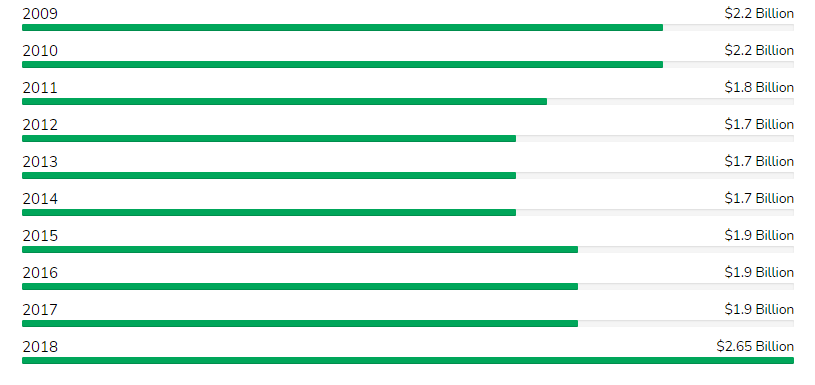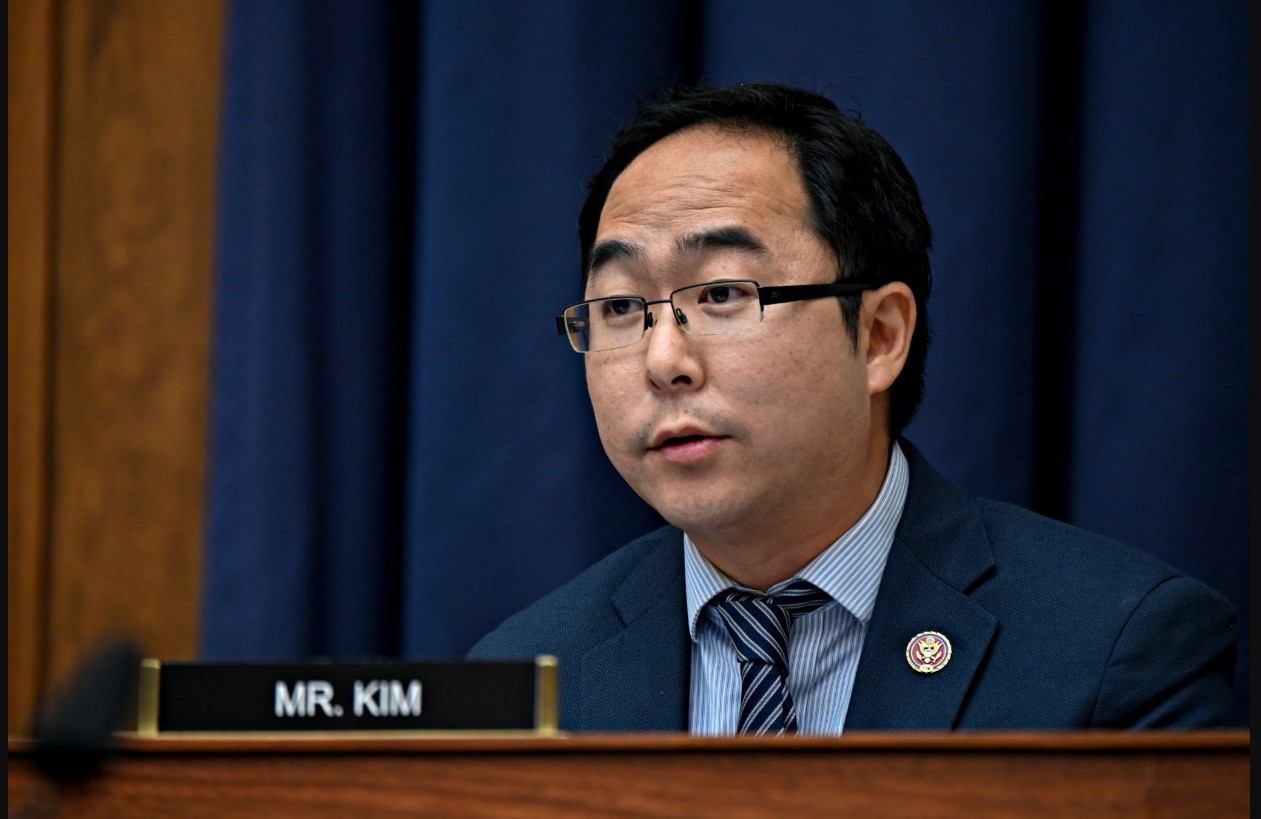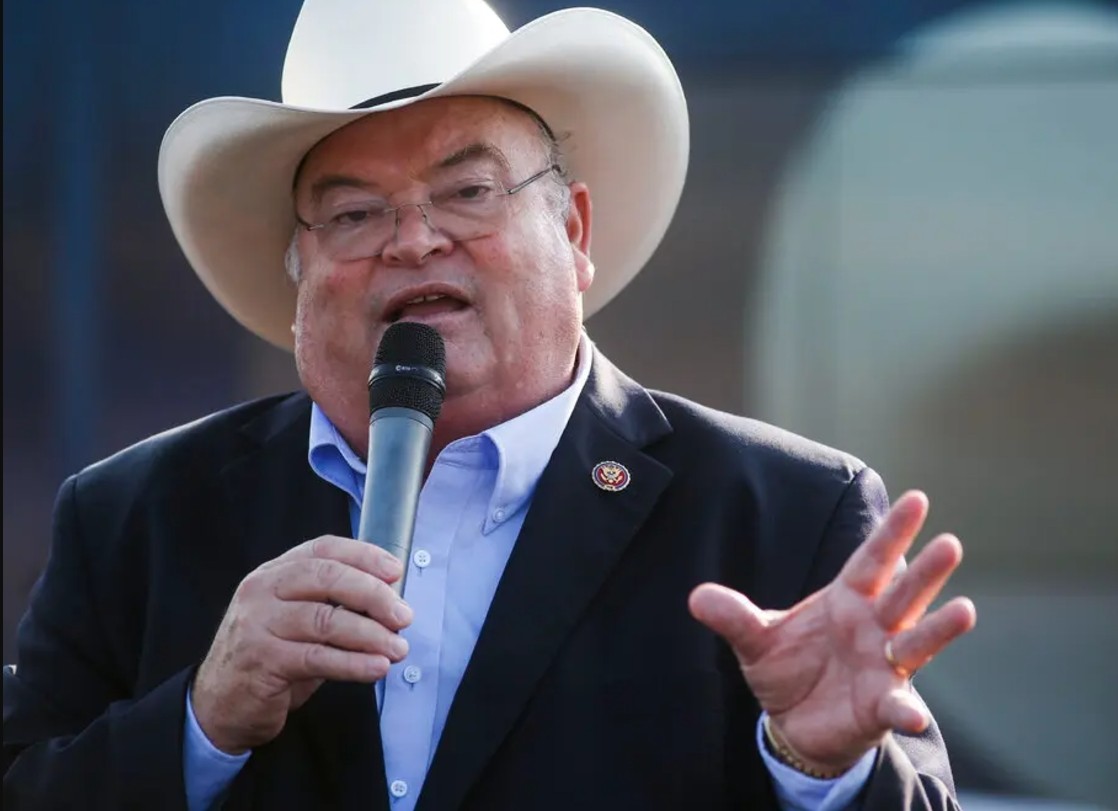Who is Glen Taylor – The Richest Person in Minnesota?
 |
| Who is Glen Taylor – The Richest Person in Minnesota? Photo: Pioneer Press |
Glen Taylor (born April 20, 1941) is an American billionaire businessman in Minnesota who is the majority owner of the Minnesota Timberwolves NBA basketball team, owner of the Minnesota Lynx WNBA basketball team, owner of the Star Tribune, and a former member of the Minnesota Senate.
Famous Quote:"I like the garden and the farm stuff because I'm by myself, and it's the opposite of what I do all day long: sit in meetings, solve problems, listen to people, hear complaints and deal with bad things. That's my job." |
Who is Glen Taylor – Biography
Glen Taylor, born in Springfield, Minnesota USA, is a businessman, politician, and sports team owner, best known as the majority owner of the NBA team the Minnesota Timberwolves, and the owner of the WNBA Minnesota Lynx. Taylor is also a former member of the Minnesota Senate. His career has been active since 1975.
Have you ever wondered how rich Glen Taylor is, as of mid-2016? According to authoritative sources, it has been estimated that Glen Taylor’s net worth is as high as $2.3 billion, an amount earned through his successful entrepreneurial career. In addition to being involved in sports and politics, Taylor owns a multinational company, which has also improved his wealth.
Read More: Who is John Bel Edwards - the Governor of Louisiana: Biography, Time Life, Career and Family
Glen Taylor: Early Life & Education
Born on April 20, 1941, and raised on a farm 60 miles west of his current home in Mankato, Glen Taylor graduated from Comfrey High School in 1959. He received his Bachelor of Science degree in Math, Physics, and Social Science from Mankato State University in 1962. During this period, he worked part-time at Carlson Wedding Service. Later he would own the company. He continued his education at the Harvard Graduate School of Business. Glen has five children: Terri, Jean, Taylor Moor, Jeff, and Kendahl.
Personal Life
Regarding his personal life, Glen Taylor has been married to Becky Mulvihill since 2007, and the pair has five children. He currently resides in Mankato, Minnesota.
 |
| Photo: Makanto Free Press |
Glen Taylor: Career
At the humble beginnings around 1950s to mid-1970s, Glen Taylor, the second of seven children, grew up on a farm outside a small southern Minnesota town and took on adult responsibilities early in life. As a teenager, he worked for his father or for neighboring farmers. He married while still in high school. When his father became a feed distributor, Glen took over operation of the farm and spent his first year out of high school as a full-time farmer as well as new husband and father.
In 1959, the Taylors moved to Mankato, Minnesota, where Glen attended college and worked part-time at Carlson Wedding Service. Established after World War II by Bill Carlson, the 18-person operation started out as a mimeograph service and then moved to custom printed wedding invitations and specialty products.
Taylor’s first job, the least desirable position in the company, was napkin stamping. When another student took some time off, Carlson placed Taylor in the stockroom. Taylor promptly overhauled the inventory system. Carlson rewarded his young employee’s initiative by making what had been a fillin position permanent. A go-getter in college as well, Taylor graduated a year earlier than his peers. He applied for and was offered teaching positions but decided to stay instead with Carlson, who wanted him to help manage the growing business.
Carlson’s firm grew rapidly during the 1960s thanks in part to innovations in the printing industry. Furthermore, UPS broadened Midwest service and opened the door to a larger marketplace for small rural businesses. Carlson would build a new plant in North Mankato and expand the operation three times.
Taylor played a pivotal role in the growth as well. He encouraged Carlson to deviate from tradition and add colored paper and inks, updated texts, and new designs, a move which proved fruitful for the company. With an eye toward his own future as well as the company’s, Taylor negotiated for a cut of the profits when he devised a way to improve efficiency of the napkin stamping operation.
Preparing for retirement, Carlson sold shares of the business to three employees, including Taylor, in 1967. Seven years later, Taylor, who had been in charge of inventories, purchasing, and marketing, bought majority interest from Carlson and part of the holdings of the other two managers. The printing business was producing $6 million in revenues at the time.
 |
| Photo: The Business Journals |
Taylor Taking Over: 1970s–80s
In January 1975, Taylor formed a holding company with Carlson Craft as its first subsidiary. He then purchased an Indiana-based wedding stationery company in August of that year. After turning the struggling operation around, Taylor proceeded to purchase other businesses and effectively establish printing companies from the ground up. As he added subsidiaries during the late 1970s, Taylor groomed future managers from the ranks of younger employees, many of them starting out as part-time student workers, just as he had done.
With a strong management team in place and business booming, Taylor turned to other challenges: he ran for the Minnesota Senate in 1980. Although he had been active in community affairs, Taylor’s only previous political involvement had been as treasurer of a senator’s election campaign. Taylor ran for that seat himself when the incumbent retired.
Once in office, Taylor was elected assistant minority leader in 1983 and majority leader in 1985. As assistant minority leader the Independent-Republican senator drew on his business experience to reorganize the caucus office. Later on the Senate floor he worked to find common ground between the opposing parties. Taylor concentrated on workers and employment compensation and education issues during his time in office.
Few fellow senators knew the scope of Taylor’s business concerns, but via a steady stream of acquisitions, start-up operations, and new product lines, Taylor had built up a business amassing revenues of $200 million by 1985.
According to a 1987 Corporate Report Minnesota article, Taylor Corporation was the country’s largest printer of wedding stationery, producing invitations, response and reception cards, thank you notes, and church programs. The company’s subsidiaries held 50 percent of the U.S. market and 80 percent of the Minnesota, North Dakota, South Dakota, and Iowa markets in these niche areas. Taylor Corporation’s 20 wholly owned subsidi-aries were located in 11 states as well as one in Canada. North Mankato-based Carlson Craft, the largest concern, had 1,500 employees. Overall, Taylor employed about 4,000 people.
In addition to wedding-related products, Taylor Corporation subsidiaries produced items such as personal stationery, business cards and letterhead, graduation announcements, and prom and homecoming decorations. Glen Taylor also held partial ownership in a North Mankato bank, a Post-It notes (3M) printing operation, and an engineering company.
In addition to his business and legislative accomplishments, Taylor was a committed member of community service organizations such as the Mankato area Chamber of Commerce, Jaycees, YMCA, and the United Way. He was also attuned to the well-being of people in his employ, offering higher wages and broader benefits than typical of rural Minnesota. Taylor Corporation was among the first companies in the state to establish onsite child care.
Furthermore, Taylor Corporation had produced profits each year since its inception and strove to internally fund its growth. “We’ve had the seller carry us for a while a few times,” Taylor said in a January 1987 Corporate Report Minnesota article by Jay Novak, “but we’ve never had to get money from a bank.” Fiscally conservative Taylor also kept a cash reserve fund of more than $5 million.
Taylor attributed his company’s success to quality products and commitment to customer service. Moreover, the structure of the company played a role in winning business. Since subsidiary companies were quite small and frequently competed against each other, customers, in general, were unaware of the magnitude of the umbrella company, Taylor Corporation. “There’s a perception that if you’re a little smaller, you care about your customers more—or your suppliers, or employees. We’d hate to have someone say, ‘Well, they’re so big they don’t need our business,“Taylor told Novak.
Taylor Corporation depended on the small order customers and the independent vendors who sold the majority of their products. Orders of $30 to $40 were Taylor’s bread and butter, and the company promised rapid turnaround and a no-fault reprint policy.
Something Old, Something New: 1990s
Taylor left the Senate in 1989 and set aside thoughts of running for governor. “Part of it had to do with a divorce, another part had to do with his rejection by the right wing of the Republican party because he wasn’t partisan enough. A lot of it had to do with his devotion to his companies, to the thrill of victory,” Jay Weiner reported for the Star Tribune.
By the early 1990s, Taylor had grown his enterprise to some 35 companies. The number of employees exceeded 7,000, roughly half located in Minnesota. Much of the company’s new growth had come from expanded North Mankato-based businesses and new product lines.
Taylor Corporation revenues passed the half-billion-dollar mark in 1993. In its September 1994 issue, Twin Cities Business Monthly reported the company had compiled an annual com-pound growth rate of almost 13 percent over the past ten years and nearly 25 percent over the past 20 years, while maintaining a solid financial position and enviable profitability record.
Although printing remained the core business concern, Taylor continued to delve into other business areas. Non-printing businesses included a direct mail marketing company, an office supply retailer, and a water-temperature control and hydraulic brake part manufacturer. Taylor owned at least six community banks in Minnesota with combined assets of more than $275 million through Taylor Bancshares of Mankato.
Timeline
| Year | Event |
|---|---|
| 1959 | Taylor was born in Springfield, Minnesota, and grew up on a farm in Comfrey, Minnesota. He graduated from Comfrey High School in 1959, and received a bachelor of science in mathematics, physics and social studies from Minnesota State University, Mankato, in 1962. In 1978 he received an executive MBA from Harvard Business School. |
| 1975 | During and after college, he worked at Carlson Wedding Service (later Carlson Craft), a Mankato print shop specializing in formal invitations. In 1975, company owner Bill Carlson wanted to retire, and Taylor offered to pay $2 million over the course of 10 years for the company. |
| 1981 | Taylor was a Republican Minnesota State Senator from 1981 to 1990, serving as assistant minority leader from 1983 to 1985 and Minority Leader from 1985 to 1988. |
| 1994 | Taylor purchased majority ownership of the Minnesota Timberwolves NBA basketball team in 1994 and purchased the Minnesota Lynx WNBA basketball team in 1999. Taylor was in talks to buy the Minnesota Twins but nothing came of it. |
| 2000 | In 2000, he was banned for nearly a year for signing Joe Smith to a secret contract in violation of the league's salary cap rules. Before Donald Sterling, Glen Taylor was the only NBA owner to be suspended for more than a couple of games. |
| 2005 | In 2005, he was rumored to be a possible buyer for the Minnesota Vikings, but was outbid by Zygi Wilf. |
| 2008 | He is a past chairman of the board of governors for the NBA serving two terms. (2008-2012),(2014-2017) |
| 2014 | In 2014, he purchased the Star Tribune for about $100 million. |
| 2015 | In 2015, his net worth was reported by Forbes to be $1.86 billion. |
| 2017 | In 2017, Taylor purchased the Iowa Energy of the NBA Development League (later called NBA G League) and renamed the team the Iowa Wolves as the developmental affiliate of the Timberwolves. |
Politics
Glen was elected to the Minnesota Senate in 1980 and served until 1990. He became Assistant Minority Leader in 1982. From 1984 to 1986, his fellow Senators elected him Minority Leader of the Senate. He provided leadership in the areas of higher education, child care and economic development policies.
Аwаrdѕ & Асhіеvеmеntѕ
Glen has been recognized for his contribution...
1. Mankato Area Distinguished Service Award
2. Mankato State University Distinguished Alumni Award
3. Outstanding Jaycee Chapter President in Minnesota
4. Distinguished Service Award from the Minnesota Association for Education of Young Children
5. Recipient of the "Book of Golden Deeds" award
6. Elected to membership in the Honor Society of Phi Kappa Phi
7. Selected by Corporate Report Minnesota magazine as the 1987 Executive of the Year
8. 1987 Laureate of the Minnesota Business Hall of Fame
9. Recipient of the Minnesota Council on Family Relations "MCFR Friend of the Family" award
10. Recipient of the Toastmasters International "Communication & Leadership" award
11. In 1996, South Central College presented him with a honorary degree, an Associate of Applied Science Degree in Graphic Arts.
12. Mankato State University awarded Taylor its first honorary doctorate on June 7, 1996. Taylor received the degree of Honorary Doctor of Laws for his distinguished professional career and volunteer service.
13. Sales Executive of the Year from the Sales and Marketing Executives of Minneapolis & St. Paul, 1999
Glen Taylor: Networth in 2021 – $2.3 billion
Glen Taylor grew up on a farm in Comfrey, Minnesota where he went to the Comfrey High School and matriculated in 1959. He later studied at the Minnesota State University in Mankato and graduated with a BSc degree in mathematics, physics and social studies in 1962. While at college, Taylor worked in a local print shop called Carlson Wedding Service, which specialized in wedding invitations. When owner of the company Bill Carlson wanted to retire in 1975, Taylor offered to buy it from him for $2 million, paid over ten years.
That purchase was a foundation for the Taylor Corporation, a multinational printing company that currently employs 15,000 people, including more than 5,000 Minnesotans. It consists of more than 70 operating divisions in 19 states, three Canadian provinces, the United Kingdom, Australia, the Netherlands, Sweden, and Mexico. The company is based in North Mankato, Minnesota, and Taylor is serving as a CEO and chairman, and as his company has developed, his net worth has increased to a large degree.
 |
| Glen Taylor's Networth through year. Photo: KnowInsiders. |
READ MORE: Who is Rocco Commisso – The Richest Person in New Jersey!
 Who is Gayle Benson – The Richest Person in Louisiana? Who is Gayle Benson – The Richest Person in Louisiana? Louisiana is home to some of America's wealthiest individuals. Let check here who is Gayle Benson, the reachest person in the "melting pot" of cultures ... |
 Who Is Rocco Commisso – The Richest Person in New Jersey Who Is Rocco Commisso – The Richest Person in New Jersey Rocco Benito Commisso, the founder and CEO of cable company Mediacom, is the richest person in New Jersey with a mouth-watering net worth. |
 Who Is George B. Kaiser – The Richest Person In Oklahoma Who Is George B. Kaiser – The Richest Person In Oklahoma George Kaiser, the chairman of BOK Financial Corporation, is an American billionaire and is also the richest person in Oklahoma. |


























